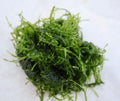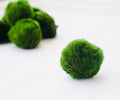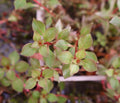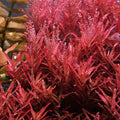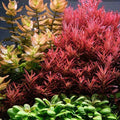Are Tannin Safe?
As aquarists, we were taught from the outset that our tanks should have "crystal clear, blue-white water" and that this is one of the indicators of a healthy aquarium.
"Crystal clear" water is not necessarily indicative of "healthy" or "optimum" water, and it is not usually what fish experience in the wild.
It is generated from humic acid and will not have a detrimental influence on the living beings in the aquarium if only a small amount is naturally leached.
In the aquarium, we don't think about "poor," we just see colourful water and think "dirty."
And, of course, here is where we must separate two factors:
The cloudiness and "colour" are typically distinct issues for most enthusiasts, although both appear to be worrisome. Cloudiness, in particular, may be a "red flag" for other problems in the aquarium.
When it comes to natural layout elements such as driftwood and stones, no two are ever the same. As a result, it is best to get your chosen size and form of layout materials as you come across them.
"Color" and "clarity" are two different things. The colour of the tank water is caused by tannins leaching into the water from wood and plants and it is not necessarily "cloudy." It is one of the most natural-looking water conditions possible. Its unlikeable colour is what it's different from so-called "crystal clear" water but these parameters do not affect the water's quality.
Tannin is 100% natural. It is because tannin is a natural substance found in all plant components, including wood and fruits. You might be familiar with this chemical called polyphenol. These are antioxidant chemicals present in fruits, vegetables, and other plants that protect the tissues from ageing.
Soaking your driftwood will aid in the removal of excess tannin. Tannins leak into the water, discolouring it from pale yellow to brown. Tannins leaching from driftwood in your aquarium are insufficient to hurt your fish. Because the "family" has many compounds, it is more appropriate to ask, "What are tannins?" The distinction is due to differences in chemical structure and botanical origins.
Remember that just because the water in a botanical-inspired aquarium system is brownish doesn't mean it's of poor quality, or "dirty," as we like to call it. It simply implies that tannins, humic acids, and other chemicals leak into the water, resulting in a distinctive hue that humans find appealing.



